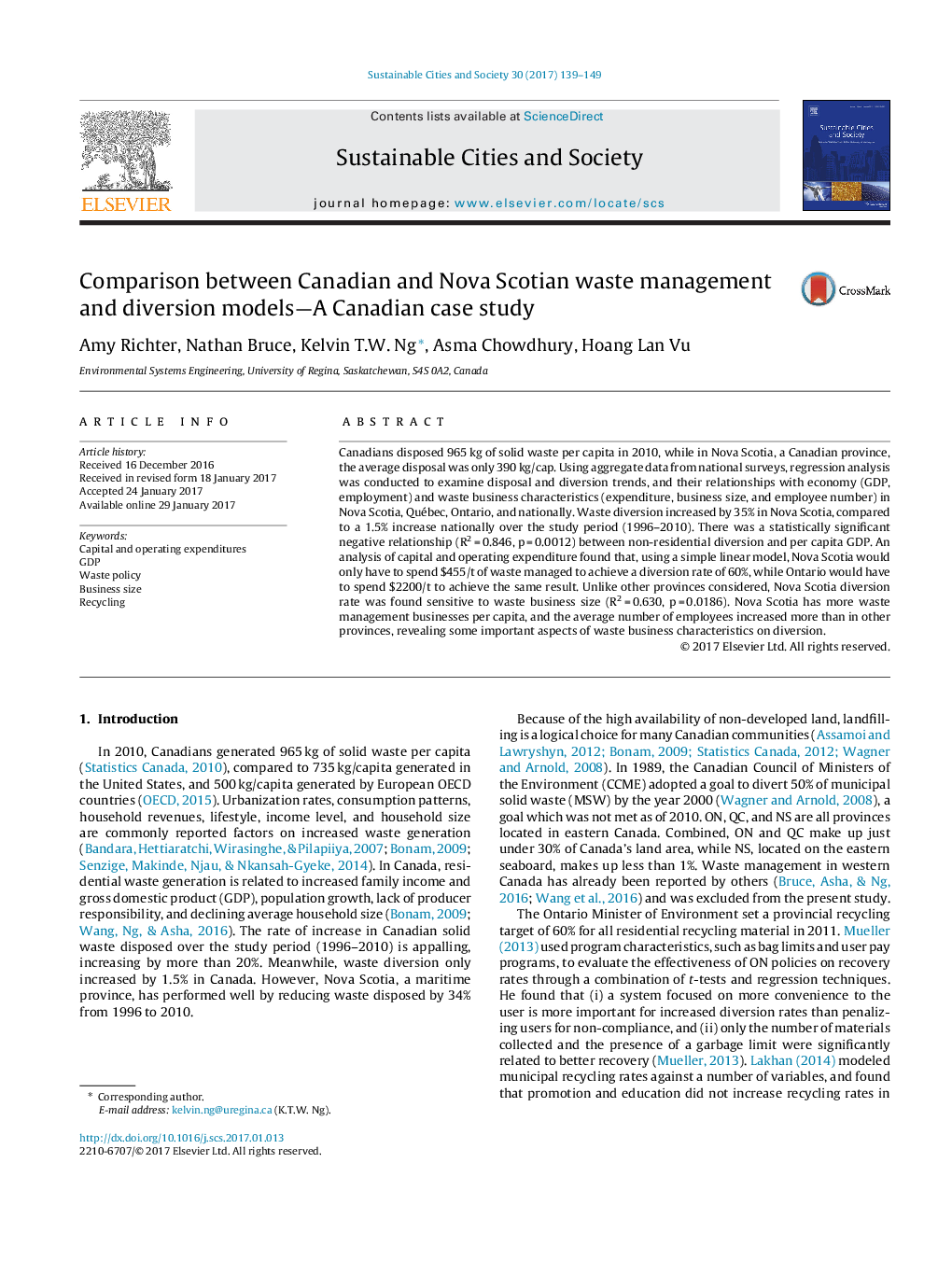| کد مقاله | کد نشریه | سال انتشار | مقاله انگلیسی | نسخه تمام متن |
|---|---|---|---|---|
| 4928146 | 1432018 | 2017 | 11 صفحه PDF | دانلود رایگان |
عنوان انگلیسی مقاله ISI
Comparison between Canadian and Nova Scotian waste management and diversion models-A Canadian case study
ترجمه فارسی عنوان
مقایسه روشهای مدیریت پسماند و انحرافات کانادا و نوا اسکوئیان - مطالعه موردی کانادایی
دانلود مقاله + سفارش ترجمه
دانلود مقاله ISI انگلیسی
رایگان برای ایرانیان
کلمات کلیدی
سرمایه و هزینه های عملیاتی، تولید ناخالص ملی، سیاست زباله، اندازه کسب و کار، بازیافت،
موضوعات مرتبط
مهندسی و علوم پایه
مهندسی انرژی
انرژی های تجدید پذیر، توسعه پایدار و محیط زیست
چکیده انگلیسی
Canadians disposed 965 kg of solid waste per capita in 2010, while in Nova Scotia, a Canadian province, the average disposal was only 390 kg/cap. Using aggregate data from national surveys, regression analysis was conducted to examine disposal and diversion trends, and their relationships with economy (GDP, employment) and waste business characteristics (expenditure, business size, and employee number) in Nova Scotia, Québec, Ontario, and nationally. Waste diversion increased by 35% in Nova Scotia, compared to a 1.5% increase nationally over the study period (1996-2010). There was a statistically significant negative relationship (R2 = 0.846, p = 0.0012) between non-residential diversion and per capita GDP. An analysis of capital and operating expenditure found that, using a simple linear model, Nova Scotia would only have to spend $455/t of waste managed to achieve a diversion rate of 60%, while Ontario would have to spend $2200/t to achieve the same result. Unlike other provinces considered, Nova Scotia diversion rate was found sensitive to waste business size (R2 = 0.630, p = 0.0186). Nova Scotia has more waste management businesses per capita, and the average number of employees increased more than in other provinces, revealing some important aspects of waste business characteristics on diversion.
ناشر
Database: Elsevier - ScienceDirect (ساینس دایرکت)
Journal: Sustainable Cities and Society - Volume 30, April 2017, Pages 139-149
Journal: Sustainable Cities and Society - Volume 30, April 2017, Pages 139-149
نویسندگان
Amy Richter, Nathan Bruce, Kelvin T.W. Ng, Asma Chowdhury, Hoang Lan Vu,
